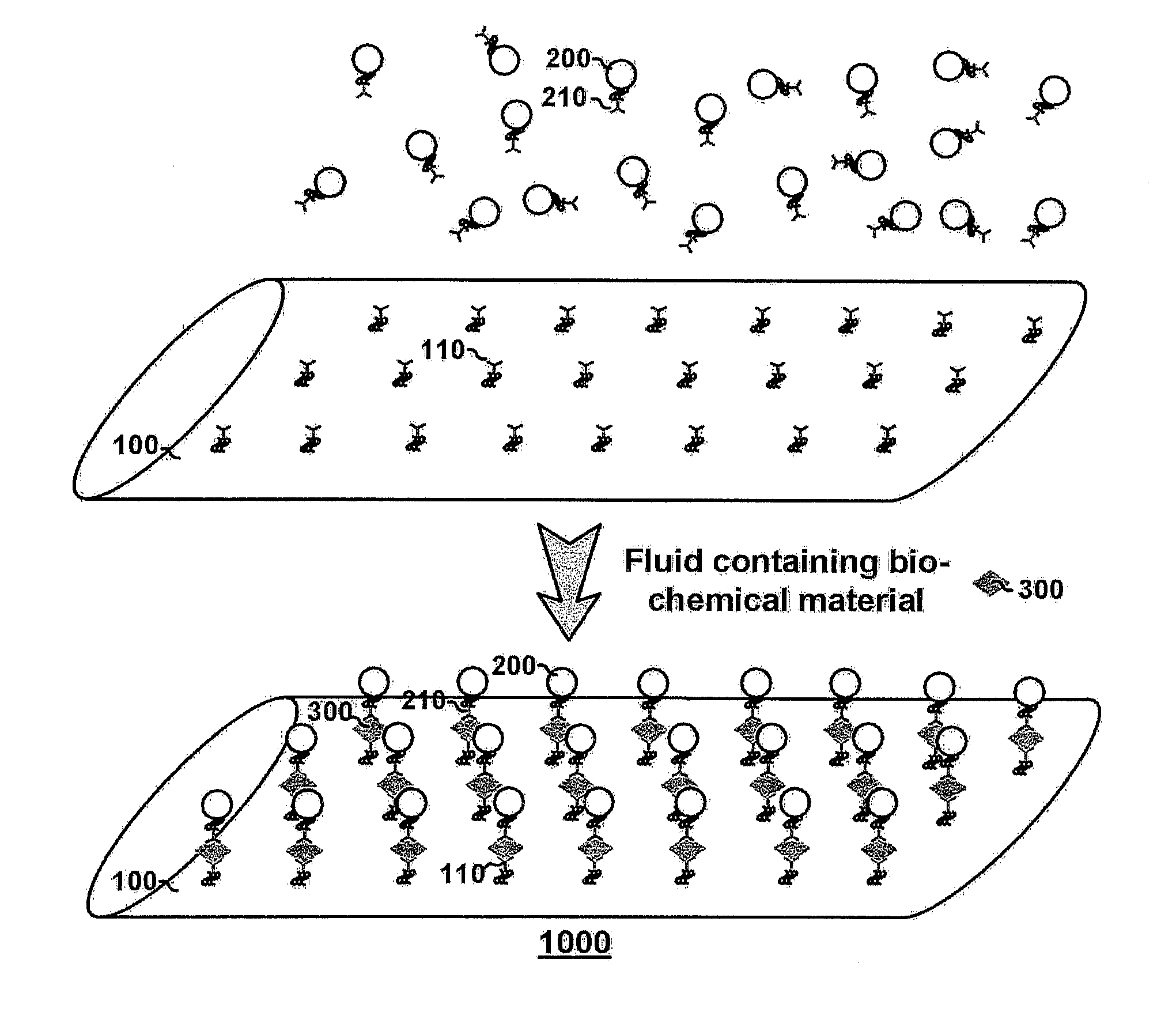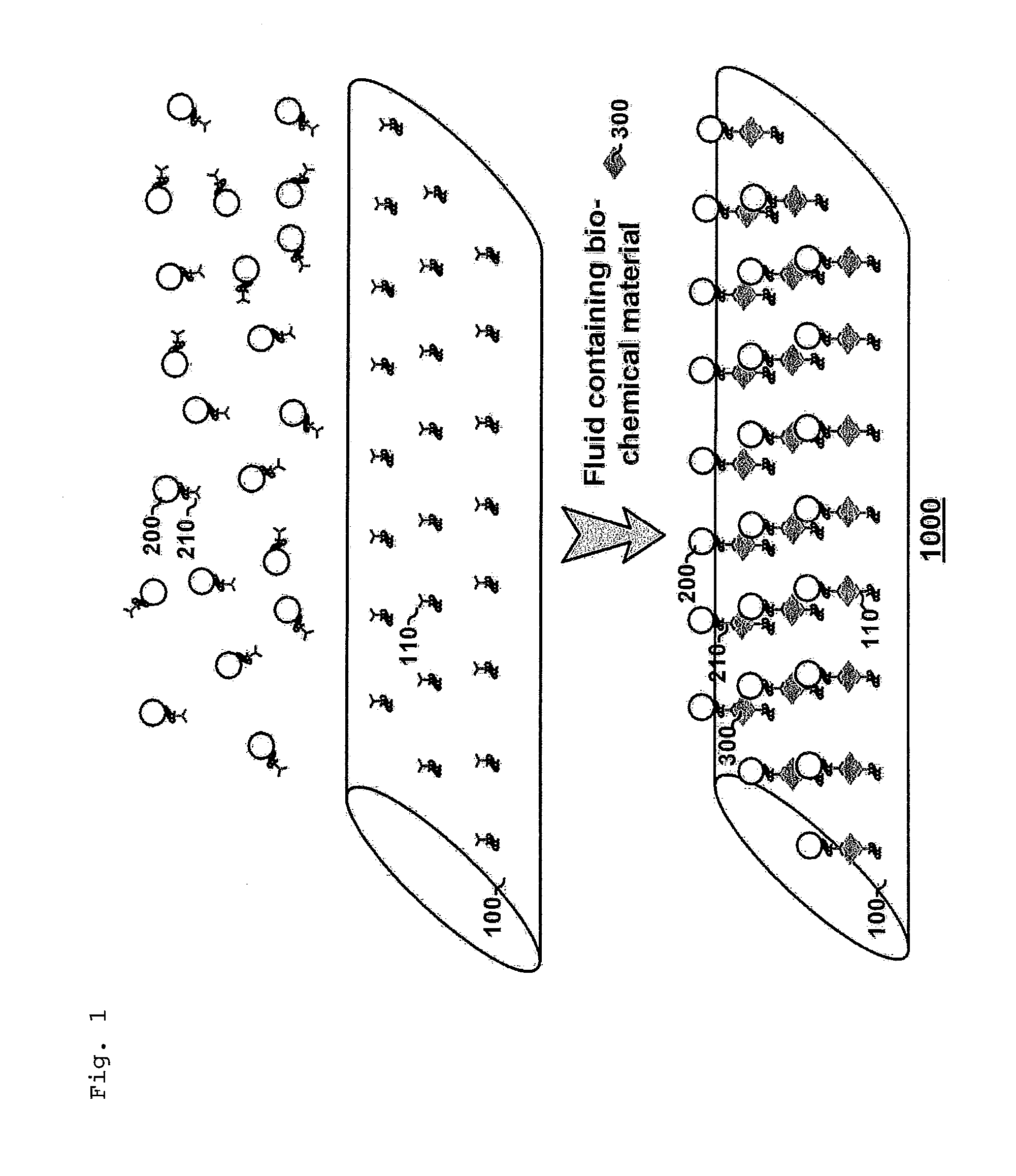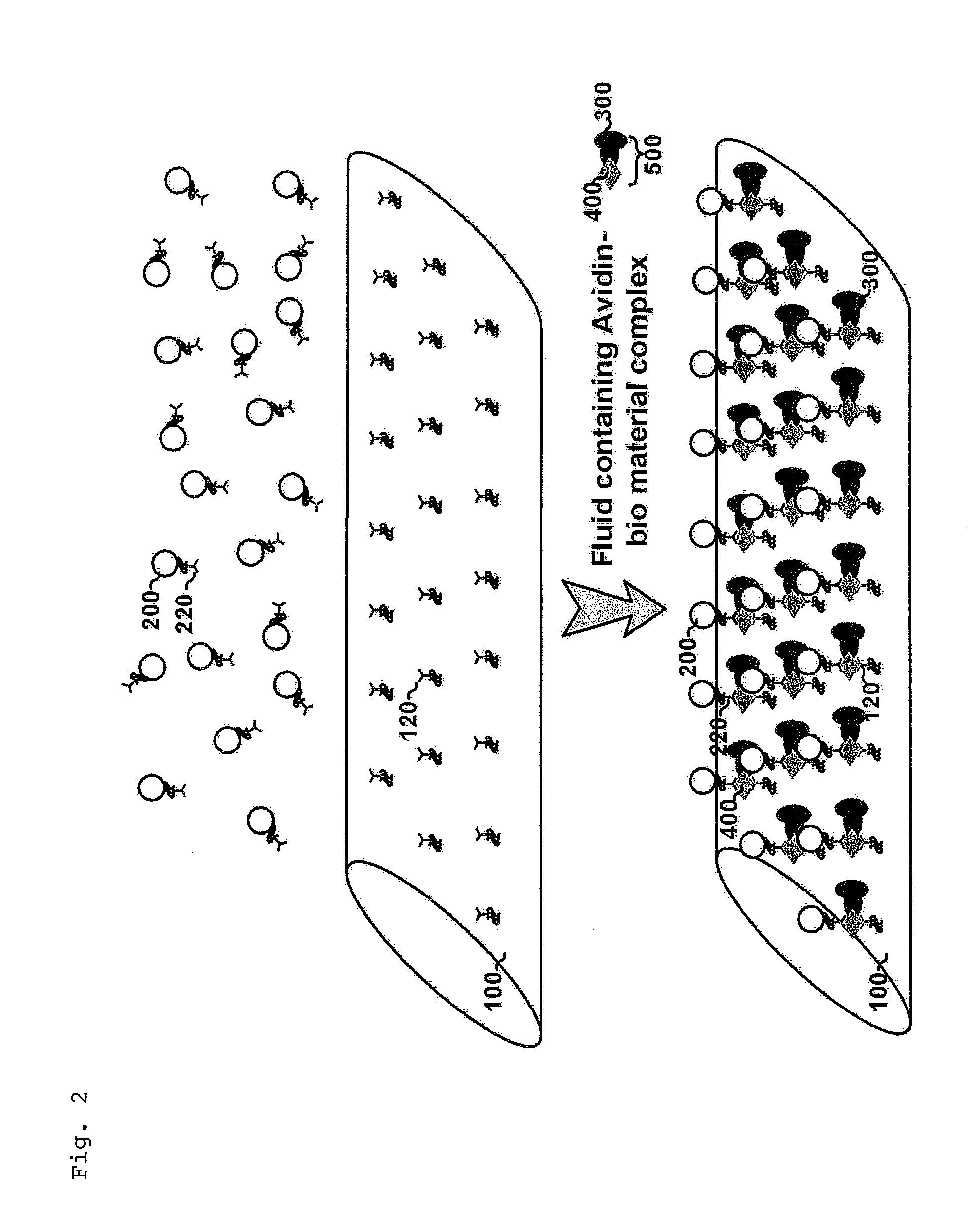Detection Method of Bio-Chemical Material Using Surface-Enhanced Raman Scattering
- Summary
- Abstract
- Description
- Claims
- Application Information
AI Technical Summary
Benefits of technology
Problems solved by technology
Method used
Image
Examples
Embodiment Construction
[0071]100: noble metal nanowire 200: noble metal nanoparticle[0072]110: first receptor 210: second receptor[0073]300: biochemical material
DESCRIPTION OF SPECIFIC EMBODIMENTS
[0074]The advantages, features and aspects of the invention will become apparent from the following description of the embodiments with reference to the accompanying drawings, which is set forth hereinafter.
[0075]The detection method of a biochemical material of the present invention is described in detail with the attached figures. The following figures are presented as examples to deliver the purpose and spirit of the present invention to those in the art. Therefore, the present invention is not limited to the presented figures and can be embodied in different ways. The same reference number in this description indicated the same component.
[0076]Unless stated otherwise, the technical terms and the scientific terms used in this description can be understood as the general meaning by those in the art. Explains th...
PUM
| Property | Measurement | Unit |
|---|---|---|
| Length | aaaaa | aaaaa |
| Diameter | aaaaa | aaaaa |
| Concentration | aaaaa | aaaaa |
Abstract
Description
Claims
Application Information
 Login to View More
Login to View More - R&D
- Intellectual Property
- Life Sciences
- Materials
- Tech Scout
- Unparalleled Data Quality
- Higher Quality Content
- 60% Fewer Hallucinations
Browse by: Latest US Patents, China's latest patents, Technical Efficacy Thesaurus, Application Domain, Technology Topic, Popular Technical Reports.
© 2025 PatSnap. All rights reserved.Legal|Privacy policy|Modern Slavery Act Transparency Statement|Sitemap|About US| Contact US: help@patsnap.com



